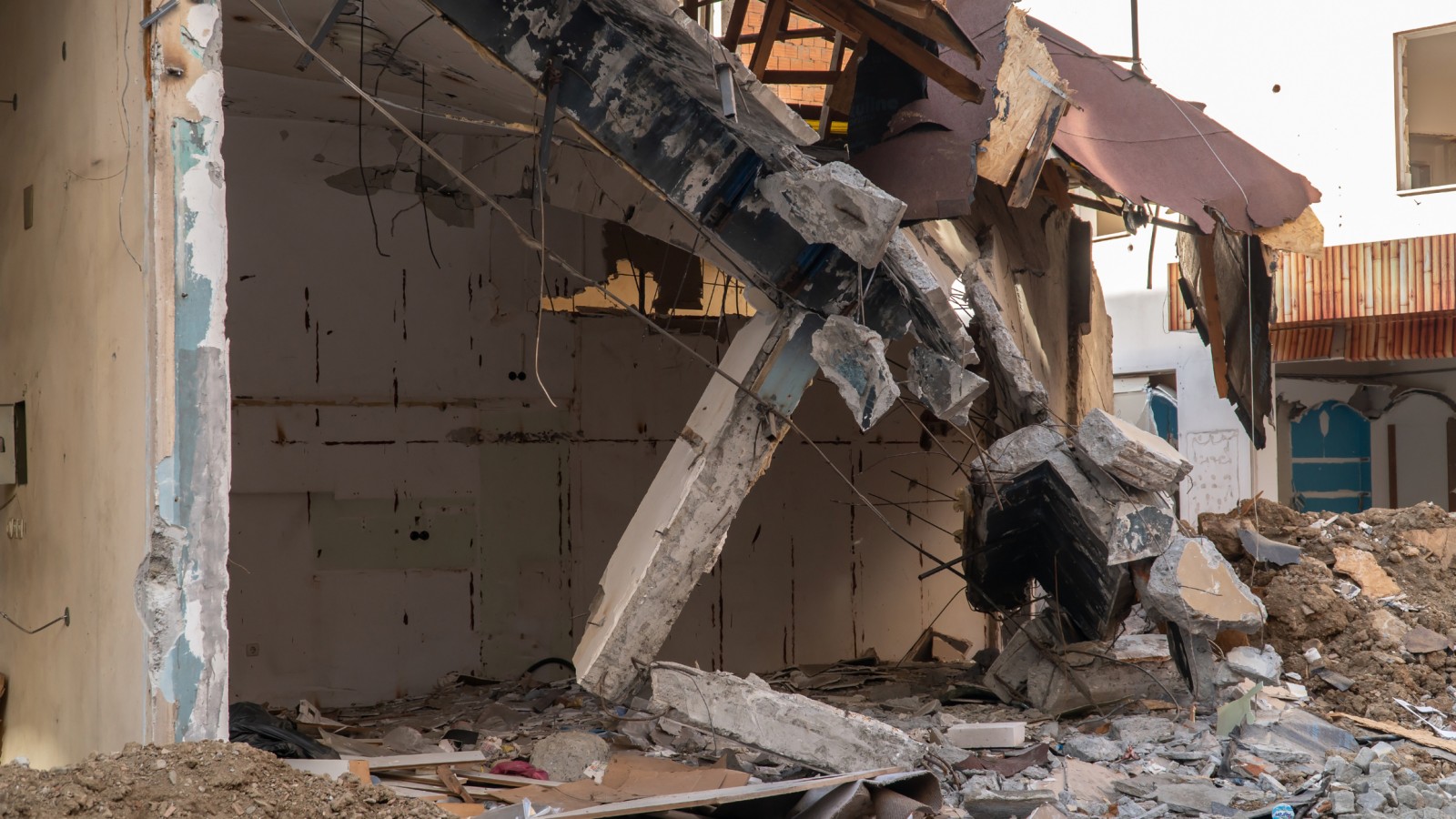
Six years go we discussed, in these pages, the city’s then-renewed earthquake-retrofit rules. At the time we argued that the anticipated volume of building permit applications would create a serious challenge for the city’s staff. In view of the recent earthquakes in Turkey and Syria and the tremors off the coast of Malibu, we thought it timely to revisit the six-year-old article, below.
Reinforcing the Future: on the need to streamline the earthquake-reinforcement process.
New rules in Santa Monica will soon require many older buildings to be inspected, and then reinforced to make them less vulnerable to earthquakes. The city has compiled a list of about 2,400 buildings that may require reinforcing. About half of these are two- and three-story apartment buildings, and many of those are mom-and-pop properties housing thousands of rent-controlled tenants. Many owners have little or no experience dealing with city permits and with hiring specialists to complete the reinforcement work. And the costs of reinforcing these buildings to withstand earthquakes could exceed the resources of many owners, who may feel compelled to sell their buildings to developers, putting at risk many rent-control units.
Last week we outlined several ideas to help the process along, including a city liaison to help owners through the process of hiring consultants, obtaining permits and carrying out repairs. This week we focus on streamlining the permit process, obtaining financing and the examples of other cities.
A Torrent of Building-Permit Applications
One challenge the city will face: how to deal with the flood of building permit applications that will result from this effort. Not all of the 2,400 buildings on the city’s list will require reinforcing. Some of them simply need to be inspected. But if we assume a worst-case scenario where they would all need building permits, the work needed to process and approve the applications is likely, in our estimation, to result in about 36,000-40,000 man-hours of work by the city. This represents about 4-5 full-time jobs for the duration of the five- to six-year program.
The problem is that nobody knows when those applications will enter the system. There might be few projects in the first year or two, and a thousand applications in year three. The difficulty in planning for this workload may push the city to contract with outside, private permit-processing companies, as it has done in the past. Hiring outside companies can help with unpredictable workloads, and will avoid increasing the city’s pension burden, but it could also increase the load on the city’s present employees, as they seek to reduce the impact of the earthquake-reinforcing work on small building owners, condominium owners and folks living in rent-controlled apartments. However competent outside companies may be, the rippling effects of this work across thousands of buildings in the city will need to command the city’s full attention to make sure that residents, apartment owners and business owners are protected from unnecessary harm.
Accounting for Finances, and the Need for Oversight
As an aside, the flood of building permits will also increase the workload for departments that handle the city’s finances. In our estimation, the earthquake-reinforcement building permits will lead to about $15 million to $20 million in permit fees, which will need to be accounted for and properly distributed. The demand for oversight will be even greater if outside permit-processing contractors are hired to help with the work. The unpredictability of the workflow will create staffing challenges in these departments also. The city is clearly able to handle this kind of workflow uncertainty, judging from past experience, but the impact of this work on the lives of so many people in Santa Monica makes a successful outcome all the more critical.
Streamlining the Process
In Santa Monica, as in many other cities, the building permit process can be challenging because even simple alterations can trigger a cascade of extra requirements and approvals, many of which have little to do with safety. In the case of vulnerable buildings, the permit process can be streamlined to reduce these additional burdens. Examples (some of them admittedly quite technical) include:
- Reduce or remove Architectural Review Board approvals for earthquake upgrades. There are over 600 Architectural Review board permits approved every year. For this urgent public safety issue, the City should avoid adding hundreds of new ARB approval requests per year.
- Allow slight shrinking of parking stall dimensions to provide room for new posts or plywood reinforcement. These minimal reductions in dimensions should be approved automatically.
- Some buildings will need significant work, such as replacement of foundations, foundation bolting and other tasks. In today’s world these projects frequently become classified by the city as major remodels (or even demolitions), that result in lengthy approval times. The City should allow these earthquake reinforcement upgrades to receive permits quickly and simply, without triggering additional requirements.
- With earthquake reinforcement projects that do not change the building size or materials significantly, the City should allow owners to bypass the coastal permit requirements and allow the work to proceed without requiring the typical waivers.
- The City should review and approve earthquake reinforcement projects ahead of any other projects that may be in line for a permit.
These are just a few ideas for streamlining the process. The City should make a concerted on-going effort to find more opportunities for making the process simpler and easier to navigate, including the hiring of a liaison to assist those folks unfamiliar with the system.
The Financing Challenge
One important challenge for many building owners will be the financing of the earthquake-retrofit repairs. The impact of these costs could be devastating for small building owners and condo owners, and the effect would extend to many renters in rent-controlled apartments if the owners are forced to sell. The city could help here as well, by adopting the examples of other cities.
San Francisco’s Mandatory Soft Story Program has created a partnership between City Hall and a private bank that offers an innovative method of financing repairs. The program will finance 100% of the earthquake retrofit costs over a period of 20 years, with the premium payments administered by the city in the form of a tax assessment paid alongside regular property taxes. The program steps owners through the application process and helps them select engineers and contractors. Then, after approval of the loan, the program disburses payments directly to consultants and contractors throughout the life of the project. This means that, apart from obtaining the building permit, the rest of the process is handled through a single entity, which simplifies the project enormously. More details about this program here: http://tinyurl.com/glbzk6r
Fixing buildings that are vulnerable to earthquakes is a critically important task that affects every aspect of life in this city. Our city government has the opportunity to partner with residents and owners to make our community safer, and protect folks who have worked and lived here for many years. Hiring a liaison to help with the process, partnering with banks to provide affordable financing, lightening up on the permit procedures–all of these are important steps that can make the process better for everyone involved.
Daniel Jansenson, Architect, for SMa.r.t.
Santa Monica Architects for a Responsible Tomorrow: Thane Roberts, Architect, Robert H. Taylor AIA, Ron Goldman FAIA, Architect, Dan Jansenson, Architect & Building and Fire-Life Safety Commission, Samuel Tolkin Architect & Planning Commissioner, Mario Fonda-Bonardi AIA & Planning Commissioner, Michael Jolly, AIR-CRE.













